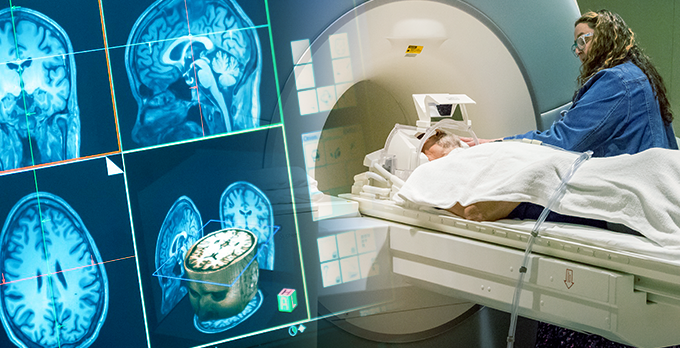The University of New Mexico’s Center for Memory & Aging has received a five-year $21.7 million program grant from the National Institutes of Health (NIH) to fund its Alzheimer’s Disease Research Center (ADRC).
Funding for the P30 grant through the National Institute on Aging follows a three-year exploratory grant that UNM received as it sought to become one of 35 research universities in the ADRC network, said Gary Rosenberg, MD, a professor in the UNM Department of Neurology and director of the Center for Memory & Aging, who serves as principal investigator on the grant.

“Obtaining this grant was a major team effort and we are all excited by this opportunity. These centers have a life of their own once they get going. We’ve got the snowball built, and now the university and state will have to help us keep it rolling.”
The ADRC network was created in 1984 to provide operational support across the U.S. for multidisciplinary research to better investigate the underlying causes of Alzheimer’s disease and related dementias and find ways to treat and possibly prevent these diseases.
“The whole point was that no one center was going to get enough information, so they built these centers for collecting behavioral data, imaging data, cerebrospinal fluid and blood data and pathology data into national repositories,” Rosenberg said. “These centers are a major resource for large studies into the cause and prevention of cognitive decline and loss.”
Researchers view dementia as a collection of disorders with different causes, with Alzheimer’s disease being the most common, he said. UNM researchers have been using artificial intelligence techniques to identify key imaging and fluid biomarkers that can distinguish between Alzheimer’s disease and vascular dementia, for example.
Alzheimer’s disease is characterized in part by an abnormal accumulation of amyloid and other proteins that causes inflammation and hinders brain cell function, while vascular dementia occurs when blood vessels are damaged by high blood pressure, diabetes, sleep apnea and other risk factors. This leads to reduced oxygen in the brain, which can cause small strokes.
“We now realize that most people have a combination of Alzheimer’s and vascular dementia,” Rosenberg said. “When you have both vascular disease and amyloid protein, the inflammation is much worse. That disrupts the blood vessels, leading to more cascading events.”
As part of the new ADRC, the UNM researchers will study ways to reduce the impact of inflammation on disease progression.
Meanwhile, the NIH has in recent years broadened the scope of biomedical research to include groups that have historically been overlooked in studies, including African Americans, Hispanics and Native Americans. For the past several years, the Center for Memory & Aging has conducted brain imaging studies at Zuni and Acoma Pueblos in western New Mexico using a portable MRI scanner mounted in a semi-trailer, accompanied by on-site neuropsychological testing by specially trained tribal members.
As part of the new grant funding, the ADRC’s Outreach, Recruitment and Engagement Core will focus on recruiting study participants from communities throughout the state in hopes of further reducing the disparities related to access to health research.
Rosenberg believes the scope of UNM’s research played a role in the NIH decision to award continued funding to UNM’s Alzheimer’s center, as did the cutting-edge imaging resources housed at the Mind Research Network, located in Pete and Nancy Domenici Hall on UNM’s North Campus.
“Our emphasis on being able to work with a large, diverse group was probably a factor, as was our forward-looking thinking about how to eventually treat these diseases by calming inflammation,” he said.
Rosenberg also credited Gov. Michelle Lujan Grisham, New Mexico’s Congressional delegation, UNM leadership and faculty and the New Mexico chapter of the Alzheimer’s Association for supporting the application for the award, which will involve research faculty and staff from both UNM Health Sciences and Central Campus.
“Obtaining this grant was a major team effort and we are all excited by this opportunity,” he said. “These centers have a life of their own once they get going. We’ve got the snowball built, and now the university and state will have to help us keep it rolling.”
The grant described here is supported by the NIH’s National Institute on Aging (P30AG086404). The content is solely the responsibility of the authors and does not necessarily represent the official views of the NIH.
